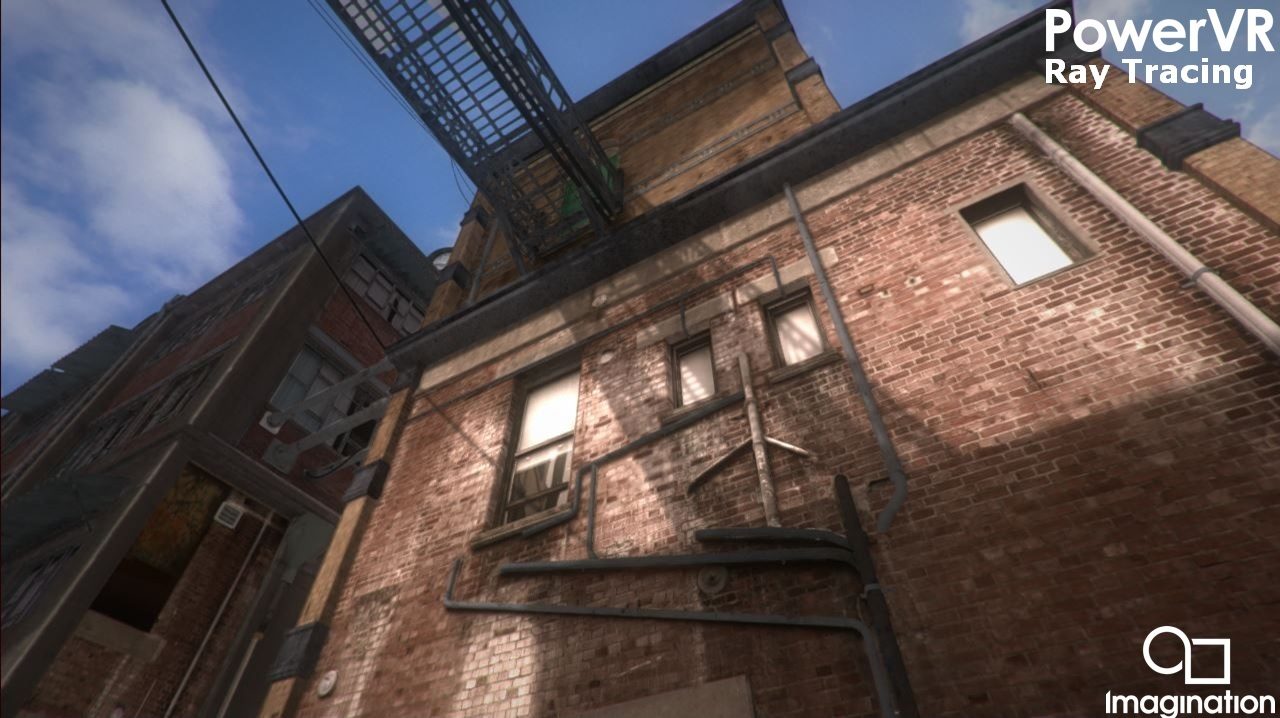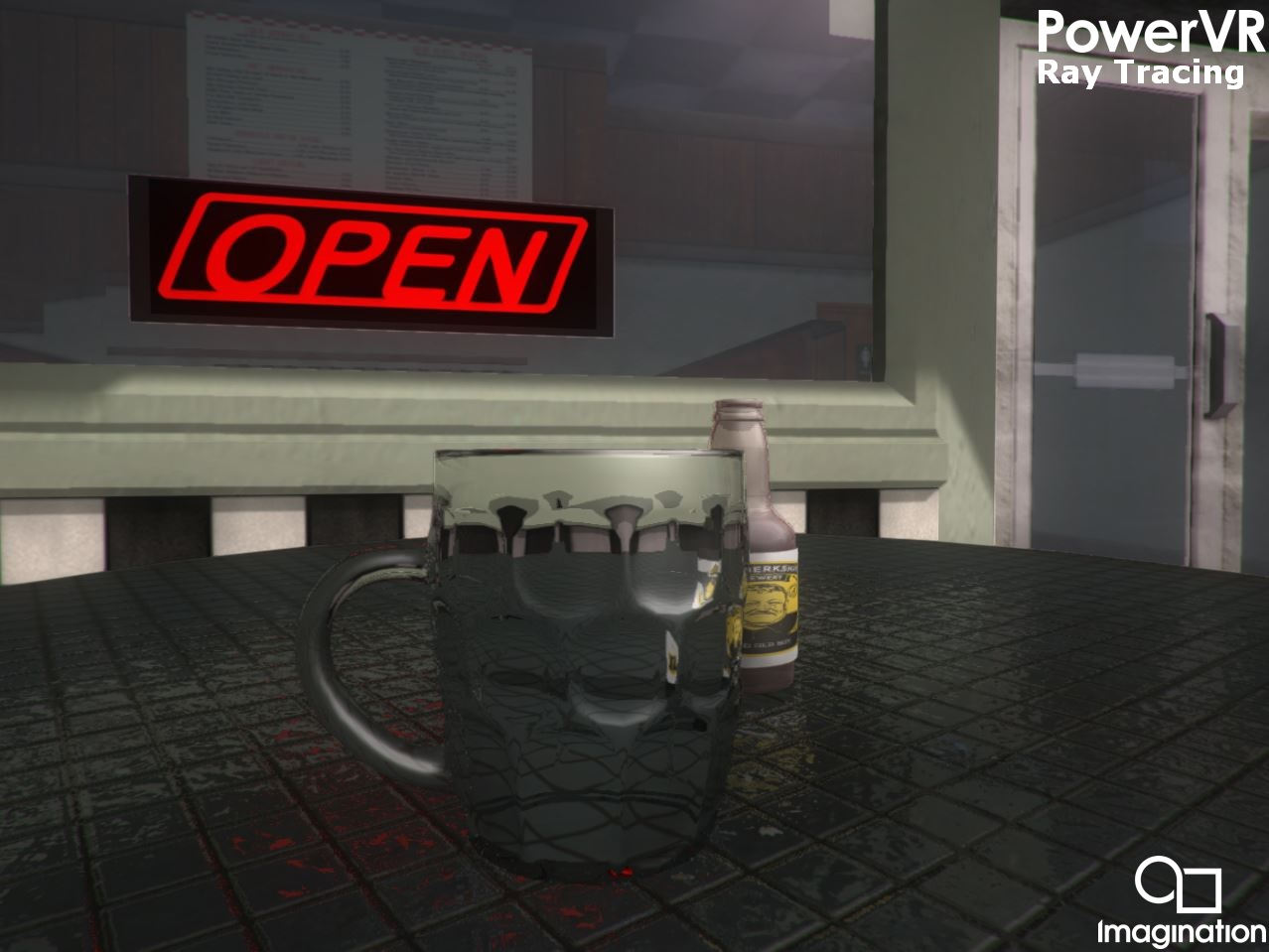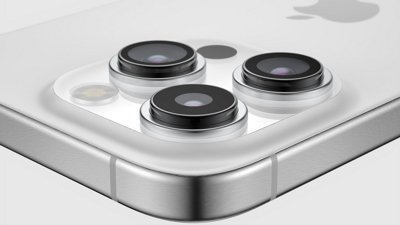Semiconductor firm Imagination Technologies, whose PowerVR chipsets are at the heart of Apple's A-series processors, on Tuesday previewed the impressive capabilities of its new Wizard series of ray tracing GPUs that may one day bring hyper-realistic graphics to iOS games.
In a demonstration video, the ray tracing technology was shown working alongside more traditional rasterized graphics to power high-resolution shadows, realistic lighting reflections and refractions, and more believable translucency for materials like plastic and glass. Imagination said that real-world implementations will bring even larger performance improvements, since the GPUs can be integrated directly into system-on-a-chip designs.
Ray tracing is a method for creating a computer-generated image in which the paths of individual rays of light are calculated based on the materials they encounter in a scene. The technique has long been used in computer graphics, but traditionally requires significant processing power and only recently began being used for realtime applications such as games.
Because each ray of light is calculated separately, images generated using ray tracing can be extremely realistic. Its effects are especially noticeable when a scene involves complex reflections, such as light bouncing off of a highly-polished translucent sphere.
Originally introduced at this year's Game Developers Conference, Imagination's new Wizard GPUs are designed to lower the power and memory requirements for realtime ray tracing to make it suitable for mobile environments. The GR6500 — the first in the Wizard series — boasts 4 unified shading clusters and 128 ALU cores that can render up to 300 million rays per second.
Apple owns a minority stake in Imagination Technologies, and PowerVR chipsets have been in every iOS device since the iPhone 3GS. In February, the two companies announced an extension of their licensing pact that spans multiple years and "gives Apple access to Imagination's wide range of current and future PowerVR graphics and video IP cores."
 AppleInsider Staff
AppleInsider Staff









 Malcolm Owen
Malcolm Owen
 William Gallagher
William Gallagher
 Andrew O'Hara
Andrew O'Hara

 Sponsored Content
Sponsored Content
 Charles Martin
Charles Martin










27 Comments
And I was recently told that anything to do with a raster is a poor design compared to vectors. :\
Must be why people move on to PhDs.
Don’t hit!
Brings back memories of running my computer for days to render a ray-traced image...
Will be interesting to see if ray-traced images are really any better than what's being done with modern GPU shaders (per fragment lighting calculations and effects).
EDIT: I see, shadows can be made a lot more realistic and detailed. Most of the other things they show (reflections and whatnot) can already be implemented in other ways.
Impressive!
I don't think there's any doubt that the iPhone 6 will be an impressive graphics processing device.